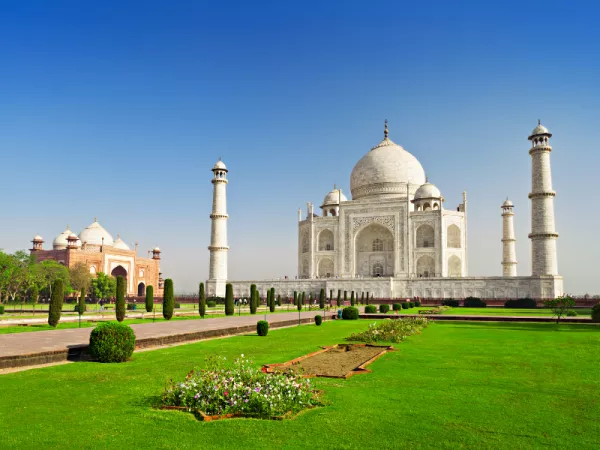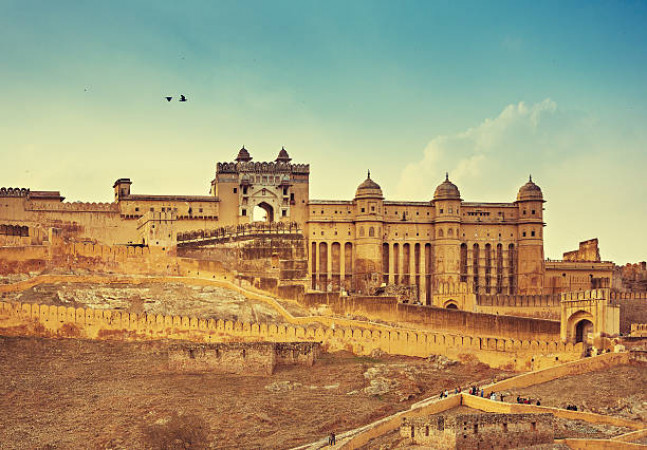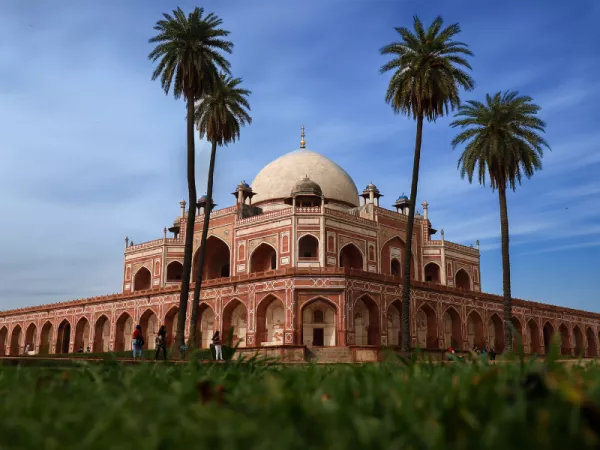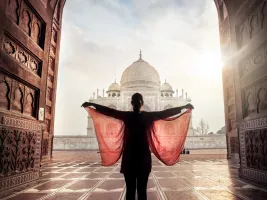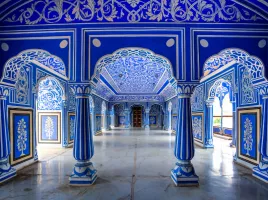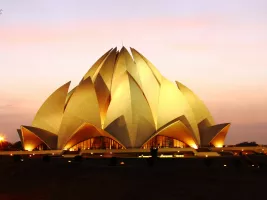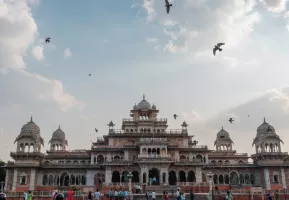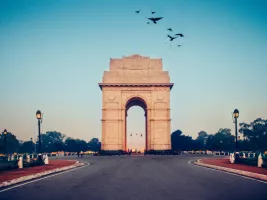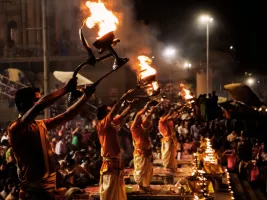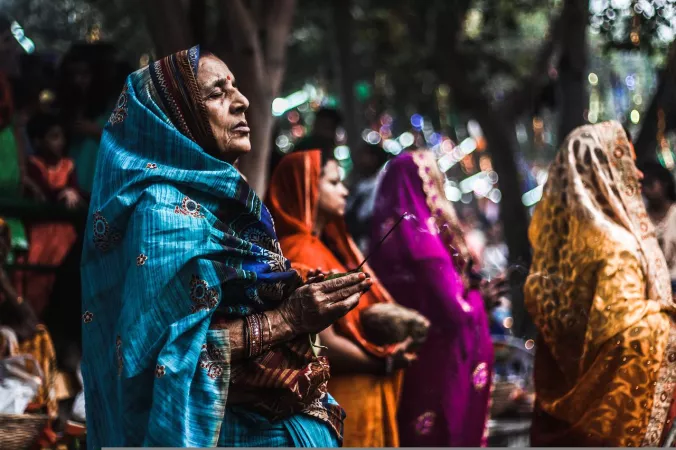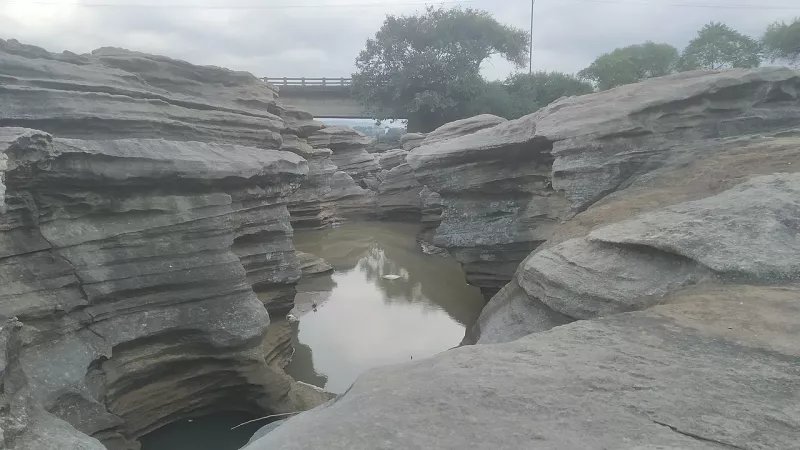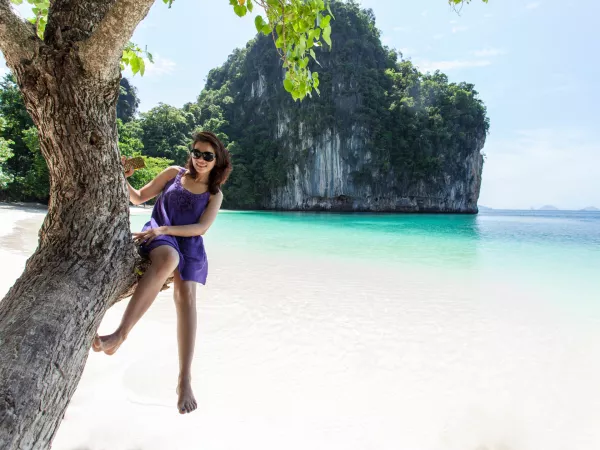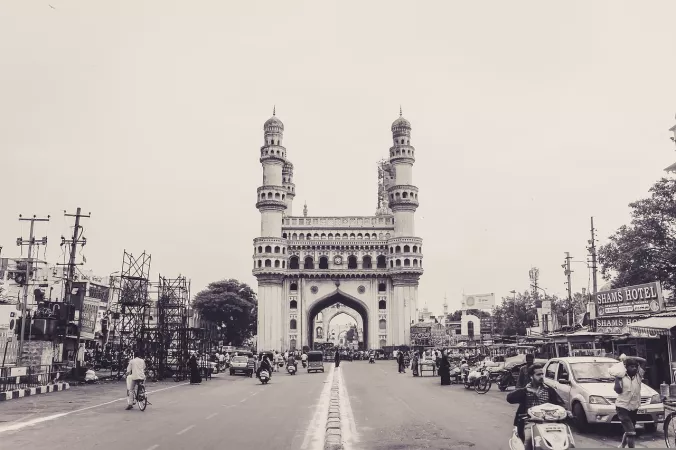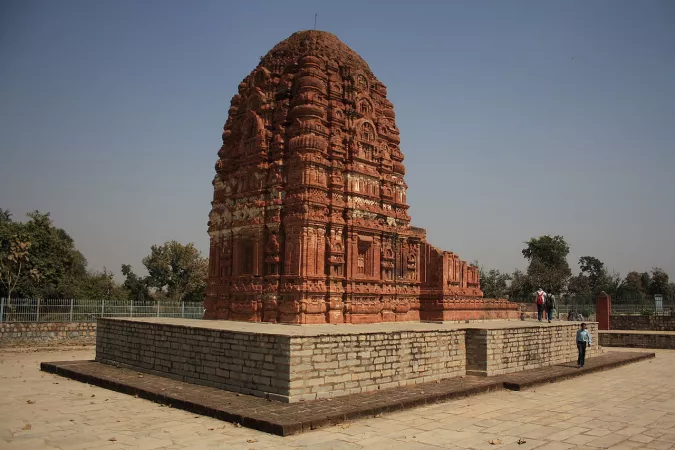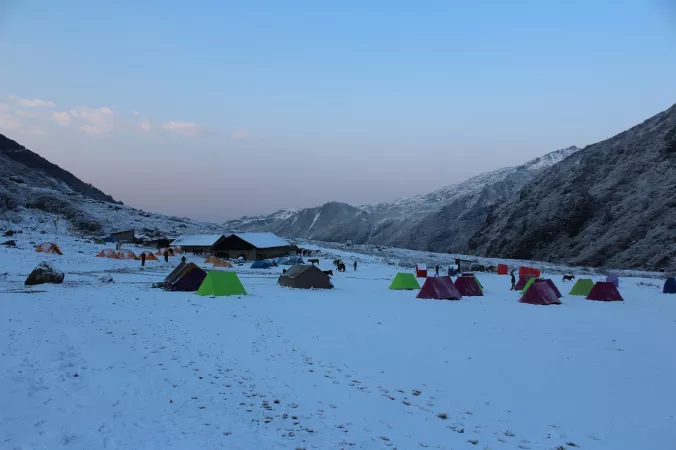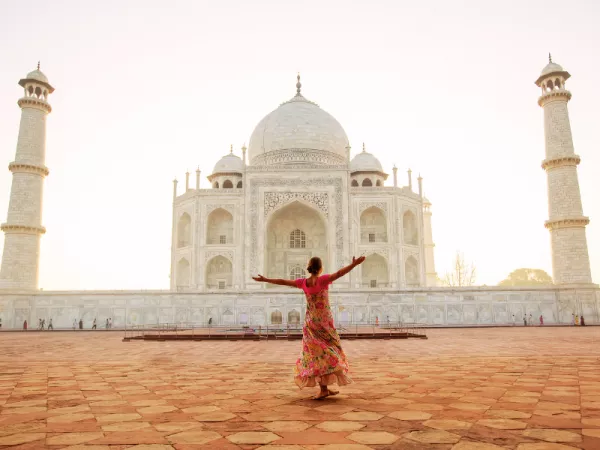
Golden Triangle Travel Guide
The Golden Triangle in India is a popular tourist circuit that covers Delhi, Agra, and Jaipur. This unique route is named for the triangular shape formed by these three cities on the map. Each city offers a rich tapestry of history, culture, and architecture, making it a must-visit destination for travelers exploring India.Top Attractions in Golden Triangle
- Taj Mahal in Agra
- Amer Fort in Jaipur
- Qutub Minar in Delhi
- Hawa Mahal in Jaipur
- Red Fort in Delhi
Golden Triangle is Famous for
The Golden Triangle is famous for its iconic landmarks, including the majestic Taj Mahal, the historic Amer Fort, and the bustling streets of Delhi.Top Attractions in Golden Triangle
- Witnessing the sunrise at the Taj Mahal
- Exploring the colorful bazaars of Jaipur
- Indulging in delicious street food in Delhi
- Marveling at the intricate architecture of the Amber Fort
- Shopping for traditional handicrafts and textiles
What's Great about Travelling to Golden Triangle?
- Rich cultural heritage
- Diverse architectural wonders
- Vibrant markets and shopping experiences
What's Not So Great about Travelling to Golden Triangle?
- Crowded tourist spots
- Extreme temperatures during summer
- Traffic congestion in cities
Travel Tips for Golden Triangle
- Carry cash for small purchases
- Dress modestly when visiting religious sites
- Stay hydrated and carry sunscreen
Important Golden Triangle trip information
- Ideal Duration: 7-10 days
- Best Time to Visit: October to March
- Nearby Airports and Railway Stations: Indira Gandhi International Airport (Delhi), Agra Cantt Railway Station, Jaipur Junction Railway Station
Top 3 Places to visit in Golden Triangle
Per Person
24,999
*EXCLUDING APPLICABLE TAXES 4.3 Ratings
( 218 Reviews )
( 218 Reviews )
Per Person
24,999
*EXCLUDING APPLICABLE TAXES 4.3 Ratings
( 218 Reviews )
( 218 Reviews )
Per Person
300
*EXCLUDING APPLICABLE TAXES 4.9 Ratings
( 200 Reviews )
( 200 Reviews )
Per Person
400
*EXCLUDING APPLICABLE TAXES 5.0 Ratings
( 3 Reviews )
( 3 Reviews )
Per Person
350
*EXCLUDING APPLICABLE TAXES 5.0 Ratings
( 3 Reviews )
( 3 Reviews )
Per Person
600
*EXCLUDING APPLICABLE TAXES 5.0 Ratings
( 3 Reviews )
( 3 Reviews )
FAQ's on Golden Triangle
Q1: What is the best time to visit Golden Triangle?
The best time to visit the Golden Triangle, encompassing Delhi, Agra, and Jaipur, is during the winter months from October to March. The weather is pleasant with clear skies, making it ideal for sightseeing and outdoor activities. Additionally, this period coincides with various festivals and events, adding to the cultural experience. Avoid the summer months from April to June, as temperatures can soar, making it uncomfortable for exploring the region.
Q2: Do I need a visa to travel to Golden Triangle?
Tourists visiting the Golden Triangle will need a valid tourist visa to enter India. It's advisable to check the specific visa requirements based on your nationality and duration of stay. Some countries may be eligible for e-visas or visa-on-arrival facilities, while others may need to apply for a visa in advance. Ensure your passport has a validity of at least six months from the date of entry into India.
Q3: What are the must-visit attractions in Golden Triangle?
The Golden Triangle boasts iconic attractions like the Taj Mahal in Agra, the Amber Fort in Jaipur, and historical sites in Delhi such as the Red Fort and Qutub Minar. Other must-visit places include the Hawa Mahal, City Palace, and Jantar Mantar in Jaipur, as well as Humayun's Tomb and India Gate in Delhi. Each destination offers a unique blend of history, culture, and architecture.
Q4: Is Golden Triangle a safe place to travel?
The Golden Triangle is generally safe for tourists, but it's essential to take usual precautions like avoiding isolated areas at night and safeguarding your belongings. Be cautious of scams and touts, especially at popular tourist sites. It's advisable to drink bottled water, eat at reputable restaurants, and follow basic safety guidelines. Stay informed about any travel advisories or local developments during your visit.
Q5: What is the local currency in Golden Triangle and can I use credit cards?
The local currency in India is the Indian Rupee (INR). ATMs are readily available in urban areas, allowing you to withdraw cash using international debit or credit cards. While major hotels, restaurants, and stores in the Golden Triangle accept credit cards, it's advisable to carry some cash for smaller establishments and local markets where card payments may not be accepted.
Q6: What is the local cuisine like in Golden Triangle?
The Golden Triangle offers a diverse culinary experience with traditional North Indian cuisine. Indulge in flavorful dishes like tandoori kebabs, butter chicken, dal makhani, and various bread like naan and roti. Don't miss trying street food delicacies like chaat and samosas. Vegetarian options are widely available, catering to different dietary preferences. Be mindful of the spice levels in dishes if you are not accustomed to spicy food.
Q7: What transportation options are available in Golden Triangle?
Traveling within the Golden Triangle is convenient with various transportation options. You can explore the destinations by hiring a private driver, using intercity trains or buses, or opting for guided tours. Auto-rickshaws and cycle rickshaws are popular for short distances within cities. Taxis, app-based cab services, and car rentals are also available for flexible travel between attractions.
Q8: Are there any cultural norms or etiquette I should be aware of when visiting Golden Triangle?
When visiting the Golden Triangle, it's important to respect local customs and traditions. Dress modestly, especially when visiting religious sites like temples and mosques. Remove your shoes before entering sacred places and seek permission before taking photographs of locals. Greet people with a 'Namaste' and avoid public displays of affection. It's customary to bargain at markets, but do so respectfully. Embrace the rich cultural heritage of the region with an open mind and a spirit of curiosity.
Q9: I am a travel agent. How can I buy travel leads of Golden Triangle?
Register yourself as a travel agent at agents.tripclap.com and then you can buy travel leads to Golden Triangle once your account is approved. For more details contact our support team at +91-8069186564 or support@tripclap.com
